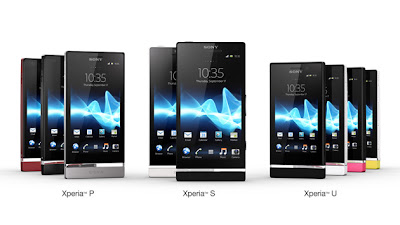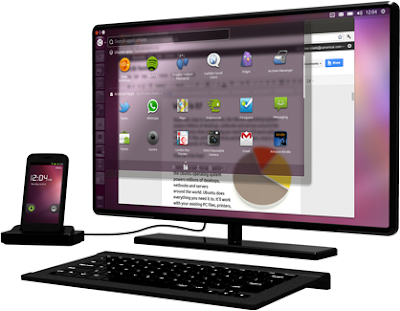Just two years ago, the
Php20,000 price range for personal computing belong to the netbook.
These devices offered poor performance, but chugged along well enough
to run Microsoft Office and could you run web browser. Intended
primarily as highly portable internet access devices, these devices
has plenty of limitations with the poor graphics performance
rendering unable to play high definition video, cramped keyboards and
constricting 1024 x 600 pixel resolution displays were hardly ideal
devices, but were good enough for their asking price. Weighing in
under 3 pounds and providing five hours or more of battery life, they
offered a low cost solution for a particular need. People looking for
portable affordable secondary devices or looking for cheap primary
computers bought these new devices in the millions.
Today, things have
changed. While netbook prices have dropped by 25% or more, and
Intel's new Atom processors offer the ability to play HD video, it is
hard to recommend these devices. With the advent of smartphones as
low cost functional computers, people today are less likely to look
for a secondary device. If the small 3.2 to 5.3 inch screens are not
sufficient for your mobile internet needs, there is the tablet, and
tablet like devices with screen ranging from 7 to 10.1-inches which
start at just Php6,000. Occupying the netbooks Php20K price point are
low powered AMD Fushion ultraportables with 11.6-inch HD displays.
The larger size makes for a better viewing experience and gives you a
more comfortable keyboard. People looking for a cheap primary
computer can a very capable 13 to 14 inch laptops with AMD Fusion or
Intel B940/950 processors at the same price a netbook would command two
years ago.
Basically, the market for
netbooks has shrunk dramatically over the past two years, and while
it has taken a longer than expected time to die, the end is in sight
for Intel's Atom powered mini laptops.
 |
| Acer Aspire S3 |
This is not the only
category which is in imminent danger of extinction. The so called
thin-and-light laptops are going the way of the Dodo too.
Thin-and-light laptops have are traditionally defined as laptops
which weigh in between 4 to 6 pounds. Half a decade ago, a 6 pound
laptop was considered light enough for carry, and with lighter 3-4
pounds units costing an arm and a leg, have gotten fairly affordable.
Intel's new category of Ultrabooks, 13-inch or so laptops weighing in
at 3 pounds or less and with prices starting below US$1,000 will be
the end of the thin-and-light.
When we started this blog
over a year ago, we redefined thin-and-light as being between 4 to 5
pounds. Even back than, we could no longer consider a laptop weighing
over 5 pounds as offering “balanced mobility.” That was even
before the ultrabook.
Today you already have
several offerings starting at US$899 from Acer, HP and Toshiba. The
Acer Aspire S3 sells at the Php45K price point on local shelves. But
we suspect that price will go down soon. While manufacturers
reluctantly entered this arena because of high manufacturing costs,
Intel's prodding and the realization that tablet gave a new meaning
to the word portable compelled them to go this route. As volume
production reduces the price of these under 1-inch thin and 3 pound
light frames, you will see lower cost processors, like AMD Fusion and
thin conventional drives find their way into Ultrabook-like devices.
Following the Ultrabook will be a bevy of 13-inch 3.5 pound low cost
laptops.
Helping in this effort
will be Windows 8. Windows, Linux and MacOSX has grown heavier each
year requiring more of the cutting edge hardware that Intel was happy
to feed to the market. But with ARM processors in mind, Windows 8
will require less RAM and processing power than any Windows operating
system since Windows XP. Testing the Windows 8 Developer Preview on
an old HP laptop running Intel Core2 Duo T7100 on just 1 GB of RAM
was eye opening. This early build of Windows 8 ran well on
specifications that would make Windows Vista and 7 feel sluggish.
Low cost processors with
ample power, the ability to play HD video with an operating system
happy to play along will make the 13-inch 3.8 pound Sony's Vaio S
(Php59,900) feel expensive and make Apple's 4.5 pound 13-inch
Macbook Pro feel heavy. Hardcore gamers and those who need processing
power for heavy applications will still need the fastest processors
that Intel and AMD can churn out. The rest of the market will be
happy with something that works, is light enough to carry around and
equally light on the wallet.
With the Ultrabook, and
Ultrabook like laptops, you will see the end of the thin-and-light
laptops. I do expect to see in the next month or two a redesigned
MacBook Pro weighing in under 4 pounds. I would not be surprise if eventually, the 13-inch MacBook Pro and 13-inch MacBook Air are merged into a single product. Sony which had been
reluctant to enter the Ultrabook fray as it would devalue their Vaio
S and Z lines will have no choice but to follow the herd.
The technology world
announced the end of netbook in late 2010. By the end of 2012, we
will see the end of the thin-and-light. Anything weighing over four
pounds should be a device targeted at gamers or workstation like
laptops used a desktop replacements. The MacBook Air on which I am
writing this on, which gets disbelieving looks from passers by, is
about to become rather pedestrian. The days of thin, light and
portable being expensive are at an end.





































